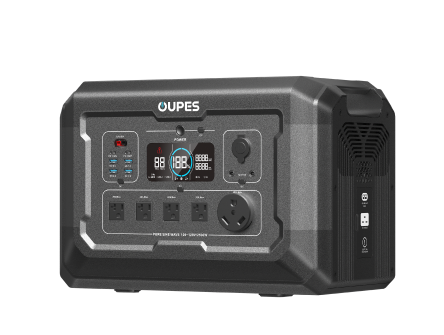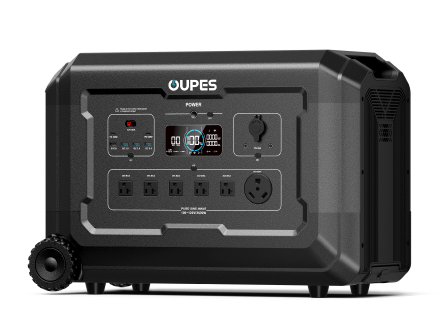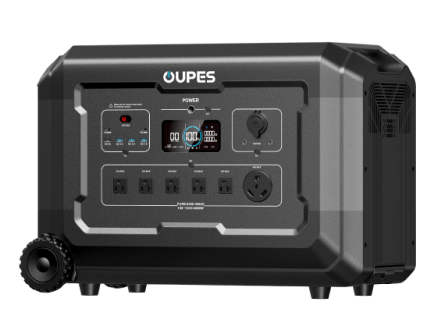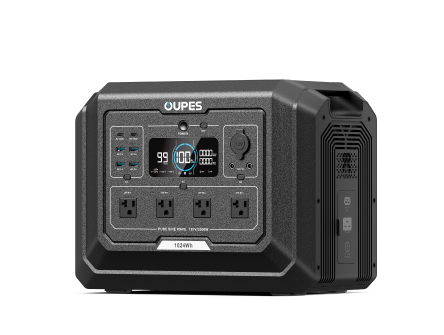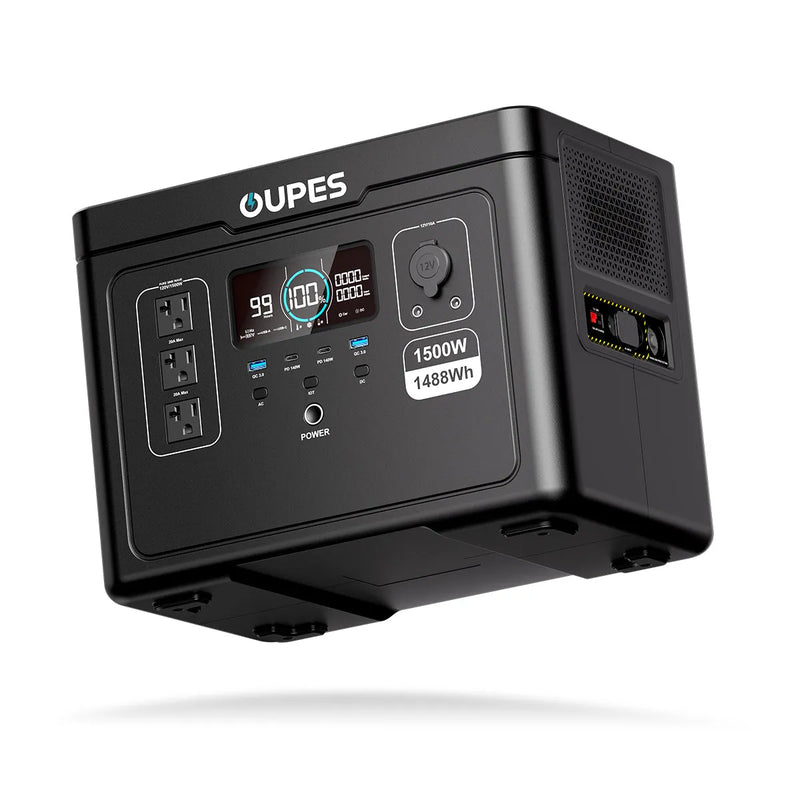
When the skies darken and rain starts to pour, the last thing any homeowner wants is to discover that their sump pump has failed due to a power outage. Flooding can strike fast and cause thousands of dollars in damage. But can a portable power station come to the rescue?
In this article, we’ll explore the real capabilities of portable power stations, especially during emergencies, and how they can play a vital role in keeping your sump pump running when it matters most.
Understanding the Power Needs of a Sump Pump
Before evaluating whether a portable power station can handle a sump pump, it's important to understand what a sump pump requires to operate. A typical residential sump pump ranges from 1/4 HP to 1 HP, and it usually runs on 120V AC. The wattage can vary significantly depending on the model, with most consuming anywhere between 600 to 1200 running watts, and up to 2,200 surge watts during startup.
The surge or starting wattage is critical. When a sump pump motor kicks on, it draws a quick spike of power to get the impeller moving. This initial surge can be nearly double or even triple the rated running wattage. So, even if your pump only runs at 800W, your power station must be able to handle a 1600-2200W surge for a few seconds.
Another consideration is runtime. A power station might be able to start the sump pump once or twice, but the real test is how long it can continue to supply that energy during a prolonged storm or outage. Depending on the frequency of pump activation and the capacity of your battery, this could vary from a few hours to an entire day.
So, to match your sump pump properly, you’ll need to look for a portable power station with both a sufficient surge capacity and enough battery storage—especially during multi-day storm systems.
What to Look for in a Portable Power Station for Sump Pump Backup
Not all portable power stations are created equal. While some are designed to power small electronics, others are built to handle high-wattage appliances like sump pumps. Here’s what you need to focus on when choosing one.
Power Output (Wattage): Choose a unit that provides continuous output at or above the running wattage of your sump pump. More importantly, ensure the surge capacity exceeds the pump’s starting watts. For example, if your pump needs 900W running and 2000W surge, your power station must meet or surpass these numbers.
Battery Capacity (Wh): This determines how long your power station can keep the pump running. A station with 2,000Wh capacity could potentially power an 800W pump for around 2 hours continuously. But in real scenarios, pumps cycle on and off depending on the water level, so runtime could be longer.
Inverter Type: A pure sine wave inverter is essential for appliances with motors, like sump pumps. Modified sine wave inverters may damage the motor or cause malfunction. Always ensure your power station has a pure sine wave output.
Weather Resistance: Since you may be using the power station in wet or stormy conditions, consider units with water resistance or that can be safely operated from a dry indoor space with extension cords.
Recharge Options: Opt for a station that can be charged via solar panels during extended outages. OUPES portable solar generators, for instance, offer flexible solar recharging that keeps your backup power sustainable.
How to Properly Connect and Use a Portable Power Station with a Sump Pump
Setting up your sump pump with a portable power station isn’t just about plugging it in. For safety and efficiency, there are best practices you should follow.
1. Direct Connection: During an outage, disconnect the sump pump from the wall outlet and connect it directly to the AC outlet of your portable power station. Avoid using extension cords unless they are heavy-duty and waterproof.
2. Test in Advance: Don’t wait until a storm hits. Test your setup by connecting the sump pump to the power station during dry conditions. This allows you to observe startup behavior, check for any error codes, and measure real-time wattage draw.
3. Monitor Runtime: Use your power station’s display to monitor how much power is being used and how much time remains. Some units offer smartphone apps for real-time monitoring, which can be especially helpful if your pump is located in a basement.
4. Protect Against Overload: Do not connect additional heavy-duty appliances to the same power station if it’s already powering your sump pump. Overloading could trigger the inverter’s safety shutoff and leave your pump inoperable.
5. Maintain Battery Health: Keep your portable power station charged and stored in a cool, dry place. Recharge it every few months if unused, and check its function at least twice a year.
Why a Solar Generator Is Ideal for Extended Outages
One of the most overlooked but critical factors in storm preparedness is fuel availability. Gasoline generators, while powerful, come with a host of challenges—noise, emissions, storage, and the need for constant refueling. During a hurricane or extended blackout, gas can become hard to find. This is where solar-powered portable stations shine.
Solar generators like those from OUPES allow you to recharge during daylight hours without relying on external fuel supplies. Simply connect solar panels and begin generating power. Even during cloudy weather, high-efficiency panels can restore enough power to keep your sump pump operational at intervals.
This makes a solar generator more sustainable and quiet, and it can be safely used indoors since it produces no emissions. Additionally, some units support pass-through charging, allowing them to power the pump while simultaneously recharging from solar input.
If you anticipate outages lasting longer than a few hours—or you live in an area prone to hurricanes, flooding, or grid instability—a solar generator-backed power station is a smart investment that pays off in peace of mind.
How OUPES Power Stations Can Help Protect Your Basement
OUPES portable power stations offer a combination of high capacity, reliable surge output, and flexible solar charging. For example, models like the OUPES Mega series come with over 2000W continuous power and pure sine wave inverters, making them a perfect fit for sump pumps of various sizes.
Some models also support battery expansion, which allows you to extend runtime when needed. If your sump pump cycles frequently due to high groundwater levels, this added storage capacity ensures you won’t run out of backup power halfway through a storm.
Moreover, OUPES units are designed for ease of use, with intuitive displays and quiet operation. Whether you’re charging from the wall, car, or sun, OUPES makes it seamless. And during the 2025 hurricane season, this kind of reliability could be the difference between a dry basement and a disaster.
In the U.S., many OUPES systems with 3kWh+ battery capacity may also qualify for the 30% Residential Clean Energy Tax Credit—an incentive that could significantly reduce your upfront investment if claimed before December 31, 2025.
Conclusion: Be Prepared Before the Storm
So, can a portable power station run a sump pump? Absolutely—if you choose the right one. Understanding your pump’s power requirements, matching it with an appropriately sized station, and testing your setup in advance are all critical steps in preparing for severe weather.
A reliable backup power source is no longer a luxury—it’s a necessity. With rising climate volatility and aging infrastructure, homeowners need to take proactive steps to safeguard their property. A high-capacity, solar-rechargeable unit from OUPES could be the ideal choice to keep your sump pump operational when it matters most.

